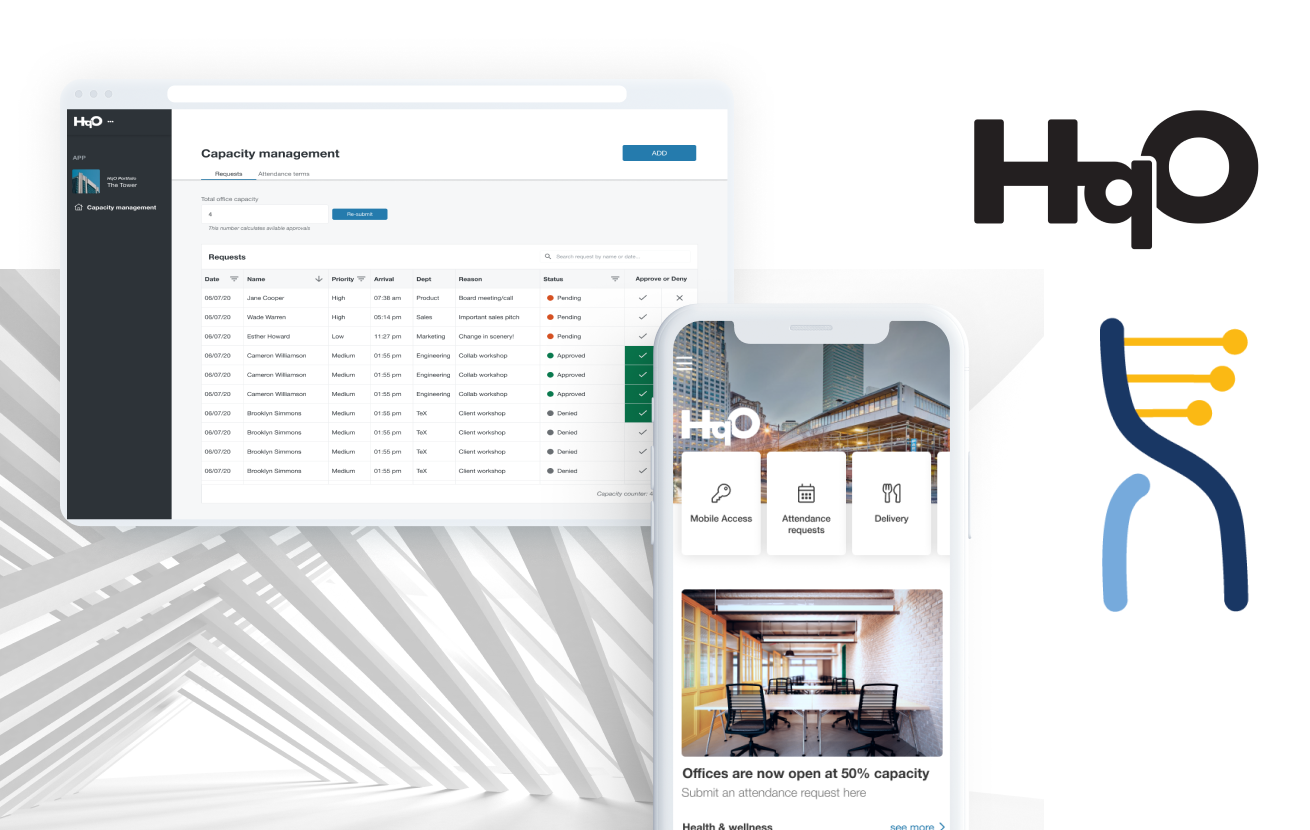Guest Blog by Haven Diagnostics
With cases of COVID-19 continuing to fluctuate across the United States, employers are struggling with the question of how to bring employees back to the workplace. Though the CDC produces a one-size-fits-all checklist for office re-entry, many commercial real estate (CRE) landlords are taking an extra level of precaution by implementing customized policies specific to their workplace and employee demographics.
As tenants and their employees transition back into the office and evaluate future workspace needs, it is important that CRE owners prioritize health and safety. Though COVID-19 re-entry strategies may vary on a tenant-by-tenant basis, one thing is clear: landlords need to prove they are taking preventative actions to ensure employee safety, so as to reassure people that they are a priority and the office is safe.
Leveraging technologies — from tenant experience platforms to medical safety tools — provides a comprehensive and quantitative approach to ensuring this comfort. One such technology, like what we provide for Haven Diagnostics customers, is agent-based modeling. This allows occupiers and landlords to run health and disease simulations within a specific building and across different density and workplace configurations. By integrating public health and mobility data for infectious diseases across commute zones, landlords can also predict possible infection patterns and rates of exposure to open up their offices responsibly. This technology can help CRE landlords mitigate possible infection within their properties, by giving them valuable data on what the rate of transmission would be in real-time, as well as solutions to decrease that rate.
Similarly, Haven Diagnostics recently integrated its technology into HqO’s end-to-end operating system for commercial office buildings, further alleviating tenant concerns in the focus areas of communications, logistics, safety, and health. The HqOS operating system helps property teams manage all customer-facing technology tools within their buildings. By activating real connections between people and their properties through seamless digital to physical experiences, it enables data-driven decision making and accelerates the implementation of innovative asset strategies. Additionally, they offer swift contact tracing capabilities through their Capacity Manager and Building Population Report features.
Though COVID-19 is a novel disease, this is not the first illness that has caused regional or even worldwide changes to the workplace. Other outbreaks such as SARS (2004), MERS (2012), and Ebola (2015) likewise transformed how people went about their daily lives. Just as they’ve done before, workplaces and businesses will have to pivot and adapt to a changing market by adopting technology. Not only will it help landlords provide necessary touchless experiences, heightened tenant engagement, and collect important data about their buildings, but it will also differentiate assets from competitors while retaining and recruiting talent.
To learn more about Haven Diagnostics, visit our website.
The opinions expressed by HqO Guest Bloggers and those providing comments are theirs alone, and do not reflect the opinions of HqO, any subsidiary or affiliate of the same, or any employee thereof. Although the articles are thoroughly reviewed by HqO staff, the views, opinions and positions expressed within these guest posts are those of the author alone. The accuracy, completeness and validity of any statements made within each article are not guaranteed. We accept no liability for any errors, omissions or representations. The copyright of this content belongs to the author and any liability with regards to infringement of intellectual property rights remains with them.



